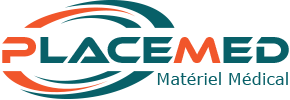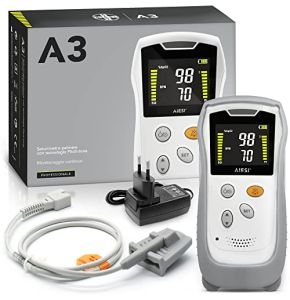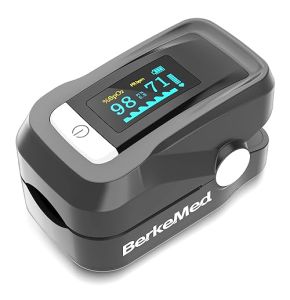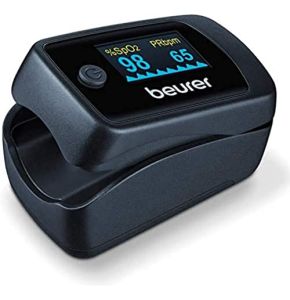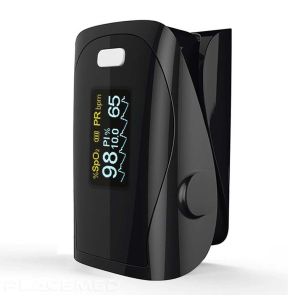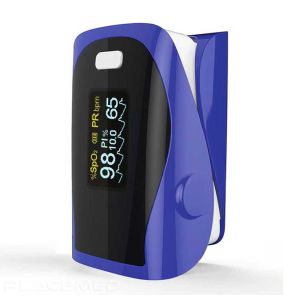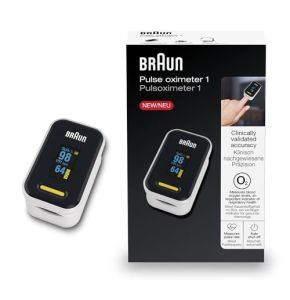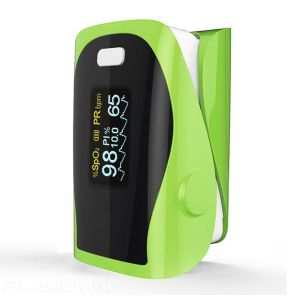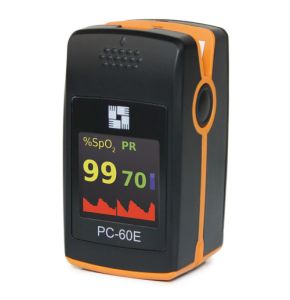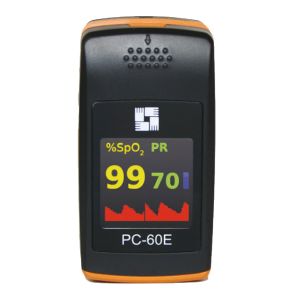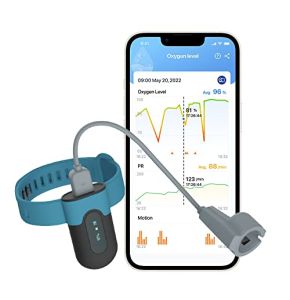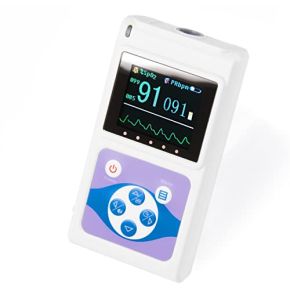Oximeter
6934440100225 18/11/2024 24
18/11/2024 9
18/11/2024 10
18/11/2024 10
18/11/2024 13
18/11/2024 8
18/11/2024 10
3760223831146 18/11/2024 16
3760223831146 18/11/2024 24
18/11/2024 17
18/11/2024 10
18/11/2024 10
3760223831146 18/11/2024 18
18/11/2024 16
18/11/2024 9
18/11/2024 9
18/11/2024 14
6941900603110 18/11/2024 21
6949006031103 18/11/2024 18
18/11/2024 8
18/11/2024 12
18/11/2024 11
18/11/2024 9
Pulse Oximeter: Your Ally for Optimal Respiratory Health
Discover medical precision at our booth dedicated to measuring blood oxygen levels. Improve the quality of your care, increase patient comfort, and ensure reliable and accurate measurements with every use! Our partners offer a wide range of oxygen saturation monitoring devices, specially designed for demanding healthcare professionals. Whether you work in a hospital, clinic, medical office, or research center, we have selected the best technologies to guarantee precise and reliable measurements.
Our selection includes devices suited for all needs and contexts: devices for daily monitoring, specific models for children, as well as portable and tabletop units for prolonged tracking. Each type of device offers unique features to meet various medical requirements.
Explore our booth to discover high-quality products, reputable brands, and the latest technological innovations. Our solutions make oxygenation monitoring simpler, faster, and more efficient, thereby facilitating the work of healthcare professionals and enhancing patient follow-up.
What is a Pulse Oximeter?
A blood oxygen measurement device is an important medical tool used to check the oxygen level in the body. This small device, often placed on the fingertip, uses special light to estimate how much oxygen is being carried by the blood. These devices are essential in many medical contexts, such as monitoring respiratory diseases or tracking patients during and after surgery. They are also useful for athletes and individuals living or working at high altitudes to ensure they are receiving enough oxygen. There are different types, including wrist-worn models, those for children, and tabletop devices, making them suitable for various needs. Understanding their importance and functionality is crucial for healthcare professionals and those who need to monitor their blood oxygen levels.
What is the History of the Pulse Oximeter?
The history of this oxygen measurement device dates back to the 20th century, with technological advancements transforming how doctors monitor patient health. The basic concept was developed alongside progress in electronics and optics. The first similar device was introduced in the 1940s, but it wasn't until the 1970s that modern models became common in hospitals and clinics. Since then, these devices have evolved significantly, transitioning from large and expensive machines to portable and affordable devices. Today, they are more accurate, smaller, easier to use, and can connect to other technologies. This tool is now indispensable in hospitals, medical offices, and even at home. Its evolution demonstrates how important it is for monitoring respiratory health and blood oxygenation, a need that continues to grow over time.
What is Pulse Oximetry and Why is it Important?
Pulse oximetry is a non-invasive method that measures blood oxygen saturation (SpO₂) and heart rate. It is performed using a pulse oximeter, a small device typically attached to the fingertip or earlobe. This measurement is crucial for assessing a patient's respiratory status, detecting oxygenation disorders, and monitoring the effectiveness of treatments.
Oxygen saturation is an essential health indicator. A decrease in SpO₂ can signal respiratory problems such as asthma, pneumonia, or other lung conditions. By regularly monitoring this value, healthcare professionals can respond quickly in case of anomalies, thereby improving patient management.
How Does a Pulse Oximeter Work?
This device measures oxygen saturation using a technique called spectrophotometry. The device emits two types of light (red and infrared) through the skin. Oxygenated and deoxygenated hemoglobin absorb these lights differently. By analyzing the amount of light absorbed, this oxygen measurement device calculates SpO₂.
This method is non-invasive and painless, making it ideal for frequent use. The device instantly displays the results, allowing real-time monitoring.
Factors Affecting Measurement Accuracy
Several factors can affect the accuracy of the device:
- Movement: Excessive patient movement can interfere with the reading.
- Peripheral Perfusion: Poor blood circulation in the extremities can skew results.
- Nail Polish: Dark colors can absorb light and alter the measurement.
- Ambient Light: Intense light can interfere with the device's sensors.
It is important to consider these factors to ensure accurate and reliable measurements.
What Are the Clinical Applications of the Pulse Oximeter?
Monitoring in Anesthesia
During surgical procedures, it is essential to monitor the patient's oxygen saturation. This device helps quickly detect hypoxemia (low blood oxygen), thereby ensuring safety during anesthesia.
Intensive Care and Emergencies
In intensive care units and emergency departments, patients are often in critical conditions. This medical device helps continuously monitor their respiratory status, allowing immediate reaction in case of deterioration.
Use in Patients with Respiratory Diseases
Individuals suffering from chronic respiratory diseases, such as Chronic Obstructive Pulmonary Disease (COPD) or asthma, benefit from regular monitoring of their oxygen saturation. This helps adjust treatments and prevent exacerbations.
What Are the Technological Innovations in Pulse Oximeters?
Portable and Connected Pulse Oximeters
Pulse oximeters have evolved to become more compact and user-friendly. Portable models can be used at home or on the go. Additionally, connected pulse oximeters can transmit data to mobile devices or online platforms.
This connectivity offers several advantages:
- Remote Monitoring: Healthcare professionals can monitor patients without requiring them to travel.
- Real-Time Alerts: Notifications can be sent in case of abnormal values.
- Trend Analysis: Collected data allows for observing oxygen saturation trends over the long term.
Integration with Mobile Applications
Many mobile applications are now compatible with pulse oximeters. They offer additional features:
- Data Recording: Historical measurements for precise tracking.
- Personalized Advice: Recommendations based on measured values.
- Information Sharing: Send results to the doctor or loved ones.
These innovations facilitate daily respiratory health management.
How to Interpret Pulse Oximeter Data?
Understanding Normal and Pathological Variations
Normal oxygen saturation in a healthy individual typically ranges between 95% and 100%. Values below may indicate hypoxemia. Here are some benchmarks:
- 95% to 100%: Normal saturation.
- 90% to 94%: Mild hypoxemia, recommended monitoring.
- Below 90%: Moderate to severe hypoxemia, intervention necessary.
It is important to consider the clinical context and the patient's history when interpreting the results.
Managing Alarms and Critical Situations
Modern pulse oximeters are often equipped with audible or visual alarms to alert in case of abnormal values. In the event of an alarm:
- Check the sensor placement and ensure it is functioning correctly.
- Assess the patient's clinical condition: breathing, skin coloration, consciousness.
- Intervene according to established protocols, such as administering oxygen.
A swift reaction can be vital for the patient.
What Are the Best Practices for Using a Pulse Oximeter?
Correct Sensor Placement
To obtain accurate measurements, it is essential to correctly place the sensor:
- Choose a clean finger without nail polish.
- Place the sensor so that it is in good contact with the skin.
- Avoid tightening too much, which could impede blood circulation.
In cases of poor peripheral perfusion, consider using the earlobe or another appropriate site.
Device Maintenance and Calibration
Regular maintenance ensures the proper functioning of the pulse oximeter:
- Cleaning: Disinfect the sensor after each use to prevent cross-contamination.
- Calibration: Periodically check the device's accuracy according to the manufacturer's recommendations.
- Storage: Store the device in a clean, dry place, away from dust.
A well-maintained device ensures reliable measurements and prolongs its lifespan.
The pulse oximeter is an indispensable tool for healthcare professionals and patients. It allows for effective monitoring of oxygen saturation, a vital parameter for assessing respiratory status. Thanks to technological advancements, these devices have become more accessible, accurate, and user-friendly.
At Placemed, we are committed to providing you with high-quality pulse oximeters to support your medical practice or home monitoring. Our selection meets the diverse needs of users, whether they are professionals or individuals.
Feel free to browse our online catalog and contact our team with any questions. Together, let's ensure everyone's respiratory health with reliable and efficient tools.
 Francais
Francais 